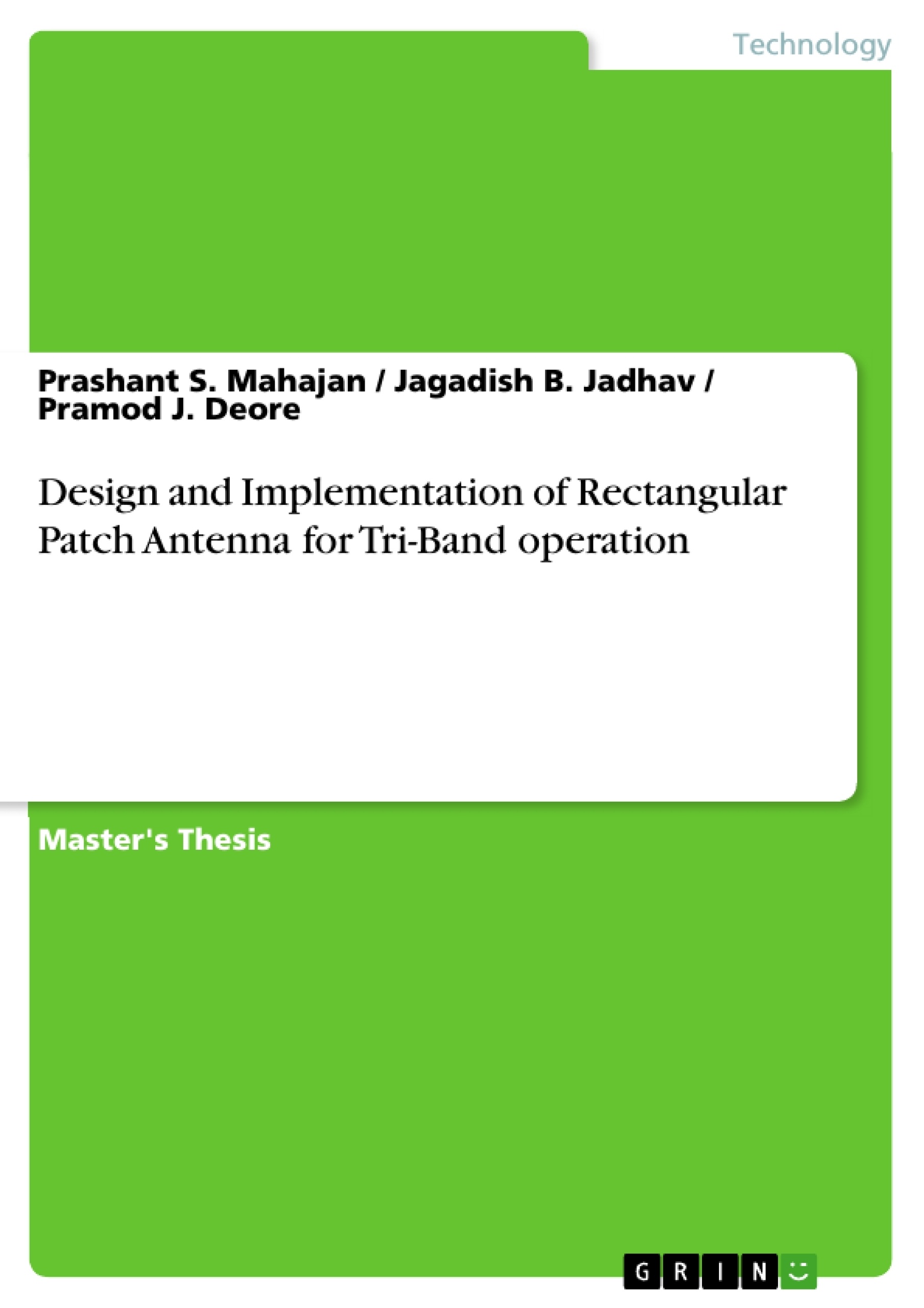In today's modern communication industry, antennas are the most important components required to create a communication link. Microstrip antennas are the most suited for aerospace and mobile applications because of their low profile, light weight and low power handling capacity. These antennas can be designed in a variety of shapes in order to obtain enhanced gain and bandwidth for dual band and tri-band operation. This book focus on a detailed study of how to design and simulate a microstrip fed rectangular patch antenna using IE3D software with effect of antenna dimensions length ( L ), width ( W ), relative dielectric constant , substrate thickness (t ) on the radiation parameters of bandwidth and gain. The design parameters of the antenna calculated using the transmission line model. Here antenna operates for tri- band operation, the operating bands are GSM , PCA and UTMS for antenna geometry -I and WLAN and WiMAX for antenna geometry -II. The fractional bandwidths (FB) after simulation obtain under criterion ( S_11 < -10 dB) are 6.45% for GSM [890-960 MHz], 4.25% for WLAN [2.40 - 2.51 GHz], 6.89% for PCA [1850-1990 MHz], 11.42 % for WiMAX [3.35 - 3.94 GHz], 9.09% for UTMS [1920-2170 MHz] and 18.18% for WLAN [5.02 - 6.63 GHz] and peak gain 2.43 dBi at 5.36 GHz.
Table of contents
List of Figures
List of Tables
Nomenclature
1 Introduction
1.1 Introduction
1.1.1 Overview of microstrip patch antenna .
1.2 Feed technique
1.2.1 Microstrip feed line
1.2.2 Coaxial feed line
1.2.3 Aperture coupled feed
1.2.4 Proximity couple feed line .
2 Literature survey
3 Problem definition
4 Objective of the book
5 Transmission line model
5.1 Fringing effects
5.2 Effective length, resonant frequency and effective width
5.3 Design
5.3.1 Design procedure
5.4 Conductance
5.5 Resonant input resistance
6 Design patch for tri-band operation
6.1 Antenna geometry I
6.1.1 Mathematical calculations of antenna geometry I
6.2 Antenna geometry - II
6.2.1 Mathematical calculations of antenna geometry II
7 Result and discussion
7.1 Antenna geometry I
7.1.1 Return loss
7.1.2 Voltage standing wave ratio (VSWR)
7.1.3 Current distribution
7.1.4 Radiation pattern
7.2 Antenna geometry II
7.2.1 Return loss
7.2.2 Voltage standing wave ratio (VSWR)
7.2.3 Radiation pattern
7.2.4 Gain
7.2.5 Current distribution
8 Comparison of antenna geometry
9 Conclusion
9.1 Scope for improvement
Bibliography
- Quote paper
- Prashant S. Mahajan (Author), Jagadish B. Jadhav (Author), Dr. Pramod J. Deore (Author), 2013, Design and Implementation of Rectangular Patch Antenna for Tri-Band operation, Munich, GRIN Verlag, https://www.grin.com/document/295831
-

-

-

-
Upload your own papers! Earn money and win an iPhone X. -

-
Upload your own papers! Earn money and win an iPhone X. -

-
Upload your own papers! Earn money and win an iPhone X. -

-
Upload your own papers! Earn money and win an iPhone X. -

-
Upload your own papers! Earn money and win an iPhone X. -

-
Upload your own papers! Earn money and win an iPhone X. -

-
Upload your own papers! Earn money and win an iPhone X. -

-
Upload your own papers! Earn money and win an iPhone X. -

-
Upload your own papers! Earn money and win an iPhone X. -

-
Upload your own papers! Earn money and win an iPhone X. -

-
Upload your own papers! Earn money and win an iPhone X. -

-
Upload your own papers! Earn money and win an iPhone X.

